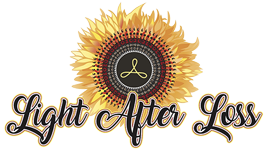Light After Loss is dedicated to helping the mental health field and community members of Stark County through education and training about survivors of suicide loss. We offer a variety of trainings and educational workshops for communities, schools, organizations and mental health agencies/practices.
Light After Loss is an approved CE provider with the Counselor, Social Worker and Marriage and Family Therapist Board of Ohio. The cost of a CE training will vary based on several factors including size of the audience, topic, length of training, customization and CE information management. We will also work with organizations with limited budgets to assist with providing quality training within the constraints of your budget.
Additional suicide and loss-related topics may be requested and will be discussed/built in collaboration with the requestor.
For questions and to request a training, please contact Emily “Em” Ribnik, M.A., LPCC-S, CGCS and Training, CE & Certification Coordinator at Training@lightafterlossstark.org
